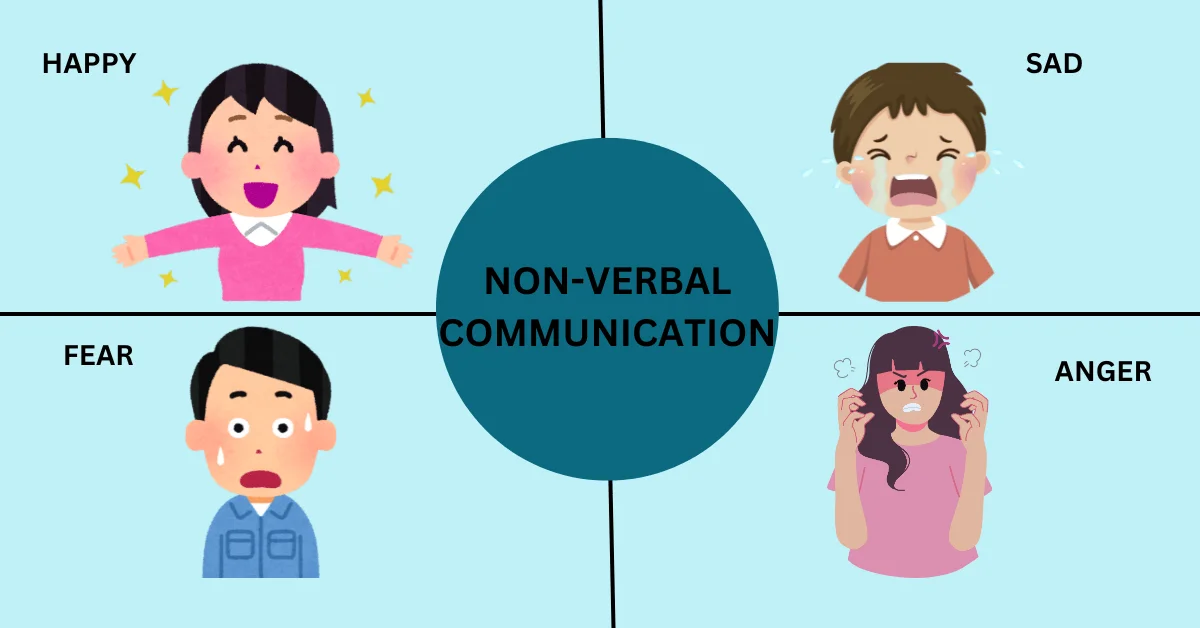Non-verbal communication

Nonverbal Communication: The Silent Language of Interaction
Nonverbal communication is a fundamental aspect of human interaction that conveys messages without the use of words. It includes body language, facial expressions, gestures, posture, eye contact, tone of voice, and even physical proximity. Often, nonverbal communication carries more weight than verbal communication, influencing how messages are received and interpreted. Understanding nonverbal cues is essential for effective communication, as it enhances relationships, fosters emotional intelligence, and helps avoid misunderstandings.
The Importance of Nonverbal Communication
Nonverbal communication plays a critical role in everyday interactions. It helps reinforce verbal messages, express emotions, and regulate conversations. In some cases, it can completely replace spoken words, such as when using gestures to communicate across language barriers. Research suggests that a significant percentage of human communication is nonverbal, making it a powerful tool in personal, social, and professional settings.
Effective use of nonverbal communication can improve trust and rapport, allowing people to connect on a deeper level. Conversely, inconsistencies between verbal and nonverbal cues can lead to confusion or mistrust. For instance, a person saying “I’m fine” while avoiding eye contact and crossing their arms may indicate discomfort or dissatisfaction.
Types of Nonverbal Communication
-
Facial Expressions
Facial expressions are one of the most universal forms of nonverbal communication. Emotions such as happiness, sadness, anger, surprise, and fear are easily recognizable across cultures. A smile can indicate friendliness, while a frown can signal discontent. Because facial expressions often occur instinctively, they can provide genuine insights into a person’s feelings. -
Body Language and Posture
The way a person positions their body speaks volumes about their attitude and emotions. Open body language, such as uncrossed arms and relaxed posture, suggests openness and confidence, while closed body language, like crossed arms or hunched shoulders, may indicate defensiveness or discomfort. -
Gestures
Hand movements and gestures add emphasis to spoken words and can have different meanings in various cultures. A thumbs-up may indicate approval in some cultures but be offensive in others. Common gestures include waving, pointing, nodding, and shrugging, each conveying distinct messages. -
Eye Contact
Eye contact is a powerful aspect of communication, conveying confidence, attentiveness, and sincerity. Maintaining appropriate eye contact can build trust and engagement, while avoiding eye contact may suggest dishonesty, nervousness, or disinterest. However, cultural differences exist regarding eye contact; in some cultures, prolonged eye contact can be considered intrusive or aggressive. -
Proxemics (Personal Space)
The physical distance between individuals conveys messages about relationships and social norms. Personal space varies across cultures; what is considered a comfortable distance in one culture may feel intrusive in another. In general, closer proximity suggests intimacy and familiarity, while greater distance can indicate formality or detachment. -
Haptics (Touch Communication)
Touch is another important nonverbal cue that conveys emotions and intentions. A handshake can signal professionalism, a pat on the back can express encouragement, and a hug can convey warmth and affection. However, cultural norms and personal boundaries influence the acceptability of touch in different contexts. -
Paralanguage (Vocal Elements)
Paralanguage refers to the nonverbal elements of speech, such as tone, pitch, volume, and speed. These factors influence the interpretation of spoken words. For example, a statement said in a sarcastic tone carries a different meaning than the same words spoken sincerely. -
Silence and Pauses
Silence can communicate just as effectively as words. Pauses in conversation may indicate contemplation, disagreement, or discomfort. Silence is also used for emphasis or to show respect in certain cultural contexts.
Cultural Differences in Nonverbal Communication
Nonverbal communication varies widely across cultures, and what is acceptable in one culture may be misunderstood in another. For instance, in some Asian cultures, bowing is a sign of respect, while in Western cultures, a firm handshake is a common greeting. In Mediterranean and Latin American cultures, people tend to use more expressive gestures and physical contact, while in Scandinavian cultures, people may prefer more personal space and restrained body language. Understanding these differences is crucial for effective cross-cultural communication.
The Role of Nonverbal Communication in Different Settings
-
Personal Relationships
In relationships, nonverbal communication helps express affection, support, and understanding. A warm smile, a comforting touch, or sustained eye contact can strengthen emotional connections. -
Workplace Communication
In professional settings, body language, eye contact, and tone of voice influence interactions with colleagues, clients, and superiors. Confident posture and firm handshakes project professionalism, while active listening cues, like nodding and leaning forward, demonstrate engagement. -
Public Speaking
Effective speakers use gestures, eye contact, and vocal variation to engage their audience. Nonverbal cues help emphasize key points and keep listeners interested. -
Conflict Resolution
Nonverbal cues play a crucial role in resolving conflicts. Open body language and a calm tone can de-escalate tensions, while defensive gestures or aggressive stances may worsen disagreements.
Improving Nonverbal Communication Skills
To enhance nonverbal communication, consider the following tips:
- Be aware of your own body language. Ensure your nonverbal cues align with your spoken words.
- Observe others. Pay attention to how people use nonverbal signals in different contexts.
- Practice active listening. Show engagement through nodding, appropriate eye contact, and responsive facial expressions.
- Adapt to cultural differences. Learn about nonverbal norms in different cultures to avoid misunderstandings.
- Use mirroring. Subtly mimicking the body language of others can create rapport and connection.
Conclusion
Nonverbal communication is a powerful and essential aspect of human interaction. It conveys emotions, reinforces verbal messages, and plays a vital role in building relationships. Being mindful of nonverbal cues and improving one’s ability to interpret them can lead to more effective and meaningful communication in both personal and professional settings. Understanding and mastering nonverbal communication enables individuals to connect with others more authentically and navigate social interactions with greater confidence.
18 0 7
Write a Comments
* Be the first to Make Comment















